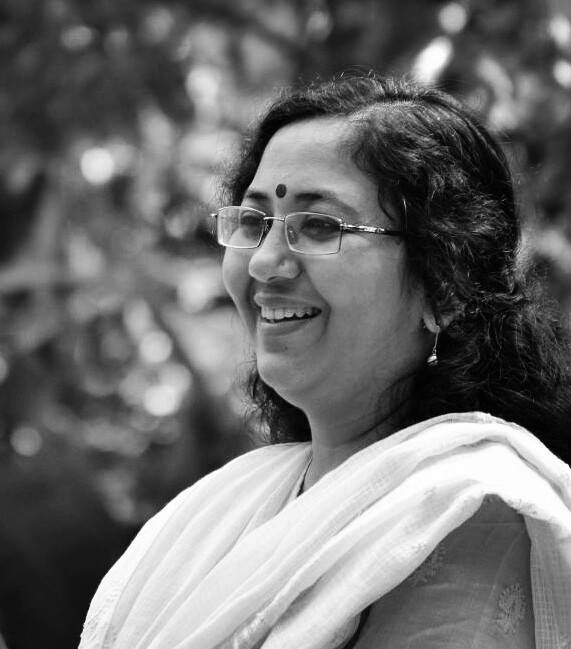In the first part of an interview series featuring literary translators, we have J. Devika who talks about the creative challenges of translation, how all texts have sedimented layers of culture in them, and the particular joys of translating K.R. Meera’s “The Angel’s Beauty Spots”.
By Chirdeep Malhotra -January 28, 2020
J. Devika is a teacher and researcher at the Centre for Development Studies, Kerala. A writer, translator and feminist, her notable translations into English from Malayalam include short stories by Sarah Joseph and K.R. Meera, and the autobiography of Nalini Jameela. In 2014, she translated K.R. Meera’s award-winning novel Aarachaar (Hangwoman). She has recently translated “The Angel’s Beauty Spots: Three novellas” by K.R. Meera from Malayalam into English. Chirdeep Malhotra connected with her for an exclusive interview, in which she talks about her translation style, how for her the process of translation is highly collaborative, and the joys and challenges of translating K.R. Meera’s three novellas.? Listen to this
First off, what languages are you fluent in?
Malayalam and English. I learned them at the same time, and for a long time, was barely conscious of the boundaries between them.
How did you get started in literary translation?
Through a friend who wanted me to translate some nonsense folk songs in Malayalam. The experience revealed to me the enormously creative challenge in moving into another language — not just the meaning and logic of one, but also its feeling, rhetoric, and cadences.
Apart from your work as a translator, you are a writer first. Please introduce our readers to your work as an author and also to your translation oeuvre.
As a young person, I wrote successfully for children, and was all set on making that my life’s work, but life led me away from it, and towards the most stiflingly adult of discourses: the social sciences. I trained as a historian — my early published work in English is about the historical shaping of Malayali society — and then I joined a social science research institute where I was exposed to the social sciences and quantitative methodology. This has shaped my choices as a translator and also my methods of translation. As an investigator of contemporary socio-economic and cultural processes, I began to develop firm perspectives on which texts deserved to be translated; as a historian, I became sensitive to the fact that all texts have sedimented layers of culture in them, all of which could be of interest to the historian. So I focused on keeping all those layers in my translation, not just retaining the ones easiest to translate. In other words, I chose my texts with a social scientist’s eye and translate keeping in my mind the historian as a potential reader.
Can you take us through your translation process — are there any fixed methods you follow? How do you decide on the appropriate language style and tone?
It is the text which decides what style works best. The translator has to be the most careful reader possible, alive to every single nuance. Because ultimately, a translation can only be the translator’s reading of the text. A serious reader’s pleasure comes from her ability to savour the delicate balance of meaning and sound, logic and rhetoric, the beauty that arises from the very unique convergence and divergence of multiple layers of culture, linguistic registers, historical times, and so on, in the text. You have to recognize each of these in your reading and then re-create them in your translation, aligning them in the same or at least similar way.
In some ways, the translator’s method resembles the craft of a jeweller who creates a new necklace from stones from an old one: setting stones carefully to catch the light best. In other ways, it is like the craft of a musician setting a tune from a song from a particular culture and language to another song in another culture and language. It is also highly collaborative — I have enjoyed most the manner in which translation brings us close, intimate — the writer, the translator, and the editor.

